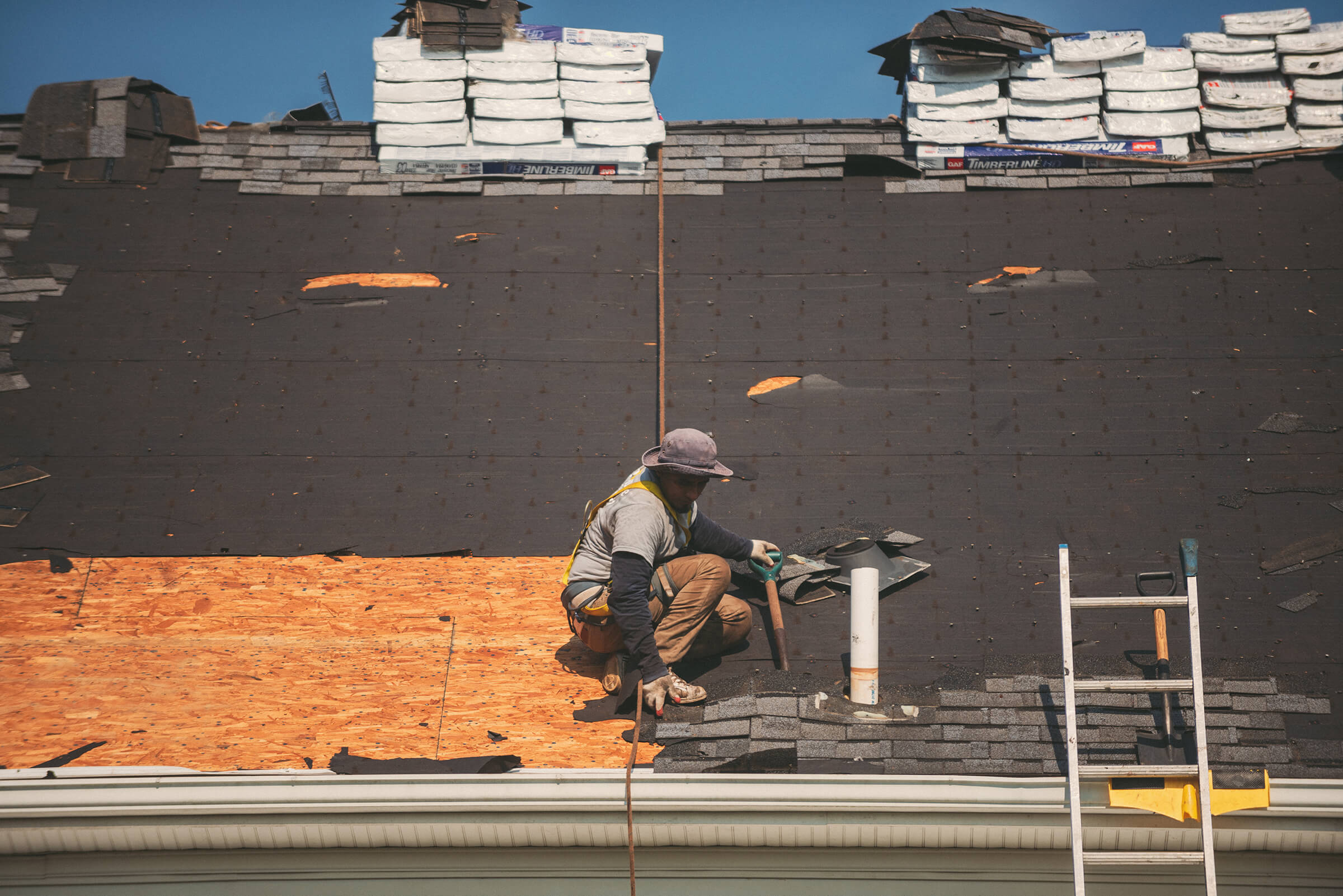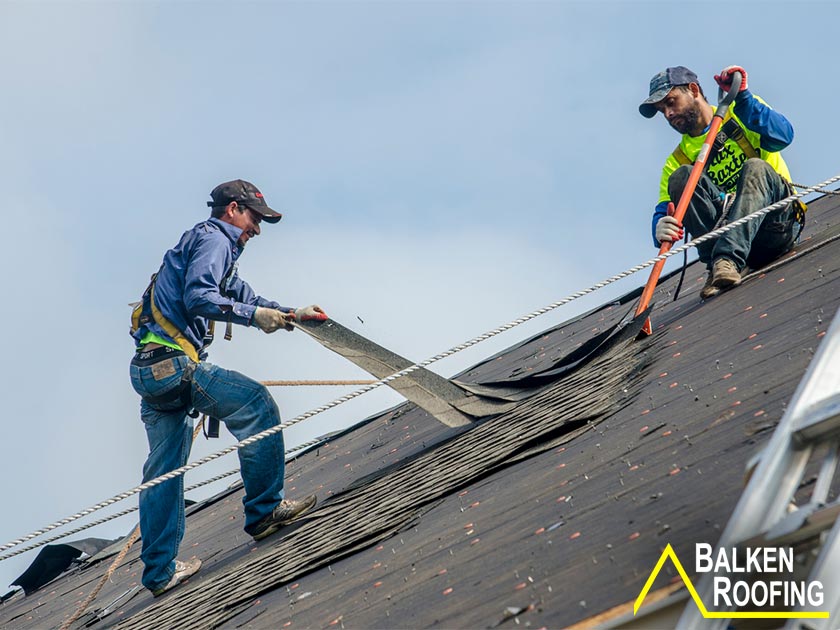Examining the very best Roofing Products for Substitute: A Detailed Analysis of Longevity, Price, and Aesthetic Charm
Picking the right roof covering material for replacement entails a careful evaluation of several important variables, consisting of longevity, expense, and visual charm. Each choice presents unique advantages and downsides; for example, asphalt roof shingles are economical yet shorter-lived, while metal roof coverings assure long life at a greater financial investment. Furthermore, the visual influence of materials like clay ceramic tiles can not be neglected, in spite of their premium rate factor. Understanding just how these aspects engage can substantially affect the decision-making procedure. As we discover these aspects even more, the implications for your particular circumstance end up being significantly relevant.
Introduction of Roof Covering Materials
As house owners significantly focus on sturdiness and power performance, recognizing the various roof covering materials offered for replacement comes to be crucial. The selection of roof covering materials directly impacts not just the visual charm of a home yet additionally its long-lasting performance and upkeep prices.
Amongst one of the most usual roofing products are asphalt roof shingles, metal roofing, and floor tile. Asphalt tiles are preferred for their affordability and simplicity of setup, making them a preferred choice for lots of household applications. Metal roof covering, that includes materials such as steel and light weight aluminum, uses phenomenal durability and energy performance, commonly reflecting heat and minimizing cooling prices. Floor tile roof, often made from clay or concrete, is valued for its longevity and visual charm, offering a distinctive look that can enhance a home's worth.
Additionally, newer products such as synthetic tiles and green roof covering systems are acquiring traction. Artificial choices resemble typical materials while giving enhanced toughness and lower maintenance requirements. Environment-friendly roofing systems, which integrate plants, add to energy efficiency and biodiversity.
Longevity Assessment
When evaluating roof covering products for substitute, sturdiness is a critical factor that house owners must take into consideration. The life-span and strength of roofing materials directly influence long-term upkeep and replacement expenses. Various materials exhibit varying levels of sturdiness, making it important to recognize their efficiency under ecological stress factors.
Asphalt roof shingles, while prominent for their cost-effectiveness, usually last 15 to thirty years and may call for more constant substitute as a result of wear and tear from UV direct exposure and extreme weather. In comparison, metal roofing uses amazing durability, with a life expectancy of 40 to 70 years and resistance to wind, fire, and insects. In addition, clay and concrete floor tiles can withstand extreme problems, often lasting longer than half a century, although their weight necessitates a durable architectural support group.

Price Comparison
Considering the financial ramifications of roof products is essential for house owners preparing a substitute. The expense of roof visit our website products can differ considerably based upon aspects such as product type, installment complexity, and local rates distinctions.
Asphalt tiles are among one of the most cost-effective options, commonly ranging from $90 to $100 per square (100 square feet), making them a popular selection for budget-conscious home owners. In comparison, metal roof can set you back in between $250 and $700 per square, depending on the kind of metal and finish selected. While metal roofing systems often tend to have a higher ahead of time price, their longevity and energy performance may lead to price savings gradually.
Clay and concrete tiles are likewise on the higher end of the spectrum, balancing between $300 and $600 per square. These products supply toughness and visual appeal yet require a considerable initial financial investment.
Finally, slate roofing, understood for its exceptional longevity and classic look, can range from $600 to $1,500 per square, making it one of the most pricey alternative. House owners need to evaluate the initial costs against the anticipated life expectancy and upkeep requirements of each material to make an educated decision.
Visual Considerations
Visual considerations play an essential function in picking roofing materials, go to website as the roof considerably influences a home's general appearance and curb allure. House owners frequently seek products that match their building design and boost the visual appeal of their property. The shade, structure, and profile of roof materials can substantially influence the general visual.
Materials such as asphalt tiles supply a variety of colors and styles, making them a prominent choice for domestic projects. On the other hand, metal roof covering supplies a streamlined, modern-day appearance and is available in many coatings that can fit modern layouts. Conventional options like clay tiles or slate can evoke an ageless elegance, appealing to those who favor traditional appearances.
Furthermore, the assimilation of roof covering materials with bordering components, such as siding and landscaping, is important. A natural shade scheme and harmonious textures can boost a home's outside and add to its worth. Property owners ought to also take into consideration just how the selected roof product engages with natural light, as this can affect the roofing's look throughout the day. Eventually, choosing aesthetically pleasing roof products requires careful factor to consider of personal taste, architectural design, and the general vision for the home.
Final Referrals
Selecting the best roof covering material can considerably boost a home's resilience and aesthetic charm. roof replacement. Based on our analysis of resilience, expense, and aesthetic factors, we recommend 3 main alternatives for home owners taking into consideration a roof covering replacement
Firstly, asphalt tiles stay the most preferred choice due to their price and flexibility. They offer a good equilibrium of cost-effectiveness and protection, making them excellent for the majority of domestic applications. However, property owners need to consider their durability, as they generally last 15 to three decades.

Last but not least, for those looking for a high end visual, slate or tile roof covering provides unequaled beauty and sturdiness. These products come with a high cost tag, their life expectancy can surpass 100 years, making them a deserving financial investment for deluxe homes.
Eventually, the ideal option will certainly depend on individual budget plan, visual preferences, and regional climate considerations. House owners need to talk to a roofing expert to evaluate their certain needs.
Conclusion
To conclude, selecting the proper roofing material necessitates a careful analysis of resilience, price, and visual allure. Asphalt tiles provide an economical service with modest long life, while metal roof covering stands out in toughness and power efficiency. Clay and concrete tiles, although costlier, substantially improve visual allure and stand up to serious weather. Ultimately, the choice must align with individual spending plans, design choices, and regional climate elements, highlighting the value of professional appointment for educated selections.